Three things you probably already know about Iwo Jima. 1) It’s a small volcanic island 750 miles south of Tokyo. 2) In early 1945 it was the scene of a fierce and costly five-week battle between US and Japanese forces. 3) While cinematic recreations of said battle are often memorable and exciting, hexy interactive ones tend to be decidedly dull affairs.
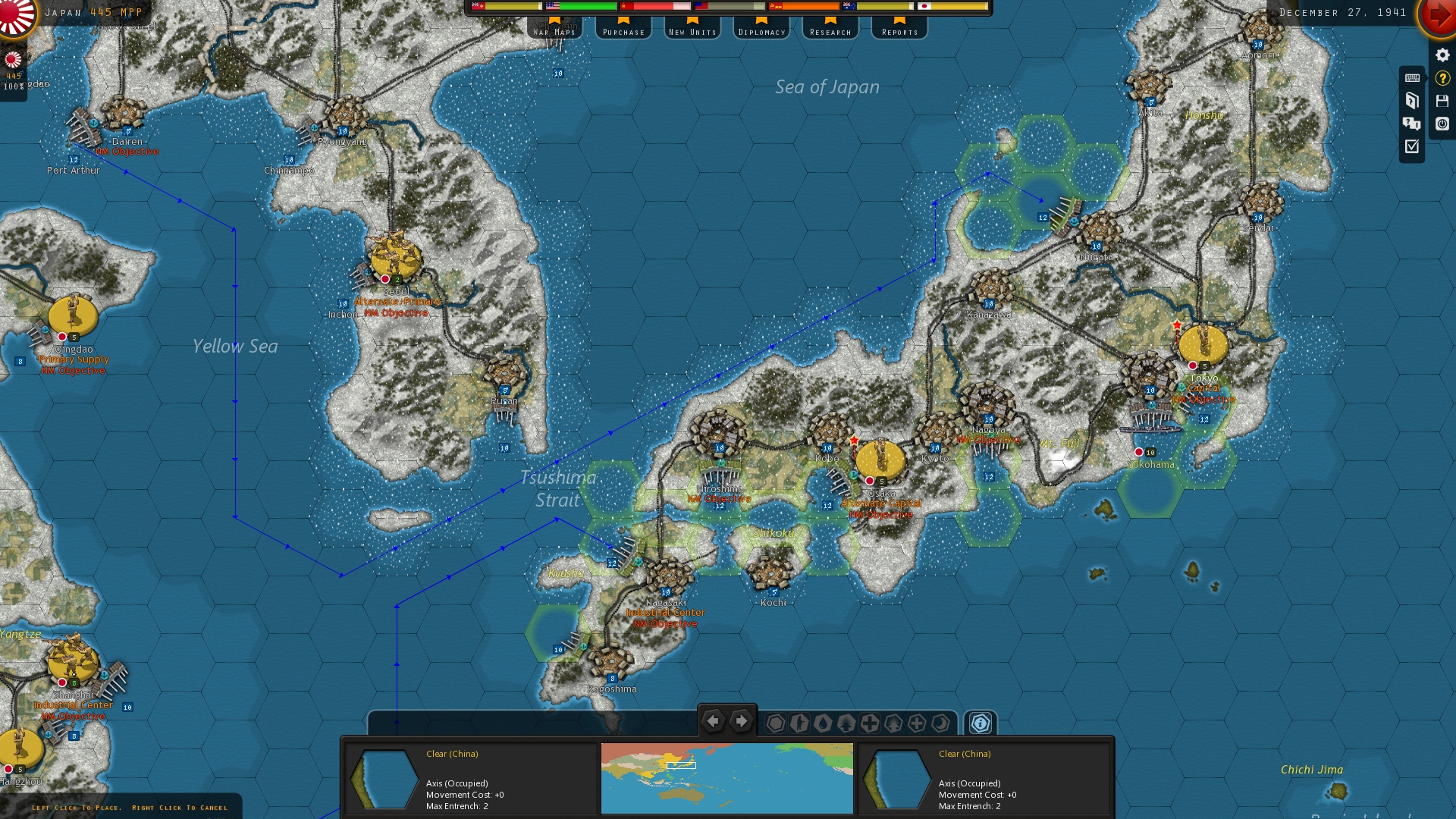
Although Strategic Command WWII: War in the Pacific’s raison d’etre is ‘1941 Day of Infamy’, a 75-turn mega scenario played on a 36K hex map that stretches from Manchuria to Australia, India to California, five mini-campaigns focused on smaller areas are also provided. Yesterday, keen to find out whether Hubert Cater and Co. could succeed where so many other devs have failed, I played the smallest of that quintet, a 26-turn recreation of Operation Detachment, the Allied invasion of Iwo Jima.
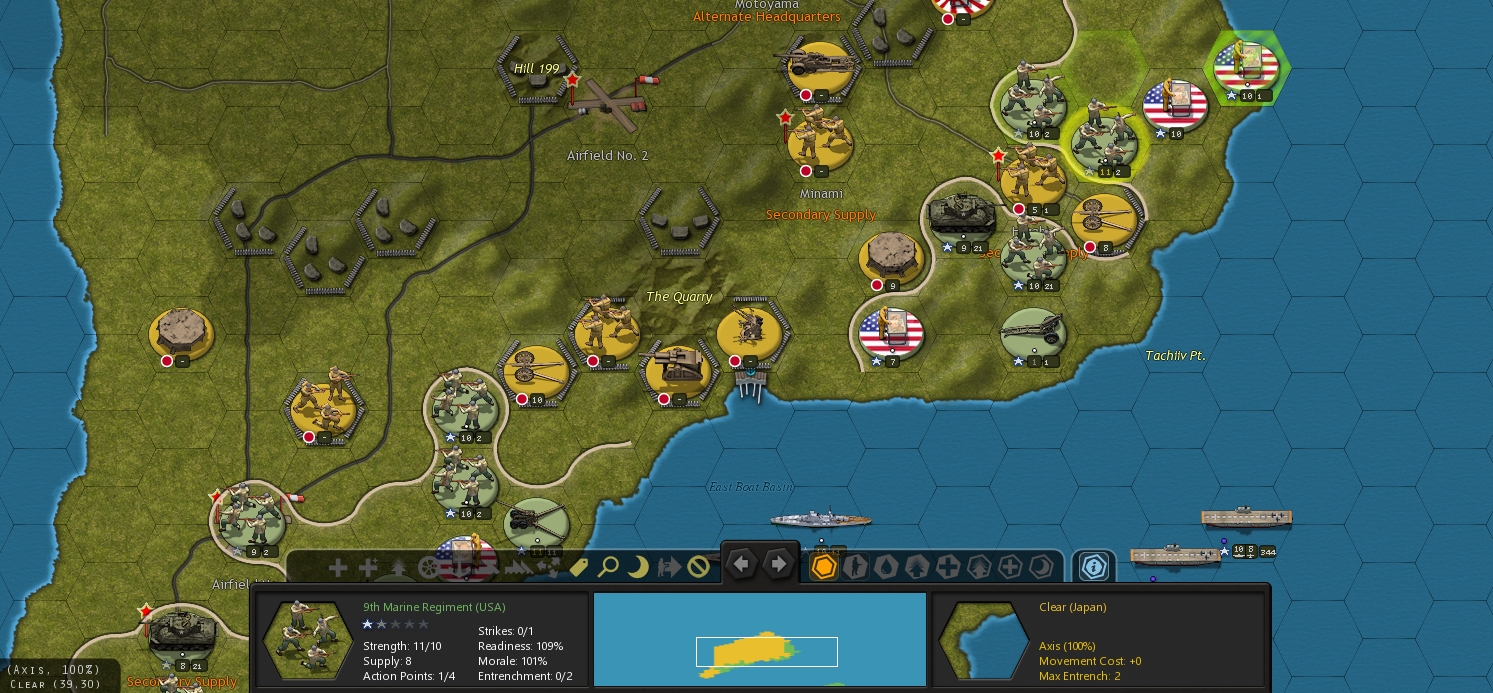
In Day of Infamy, research, production, and diplomacy matter, turns represent twenty days, and hexagons span roughly fifty miles of terrain. In Iwo Jima, the player’s concerns are strictly military, pressing the end turn advances the clock just two days, and hexes are roughly 400 metres across. Fury Software also tweak SCWW2’s entrenchment rules in an attempt to better represent the formidable fortifications constructed by the island’s 21,000 defenders.
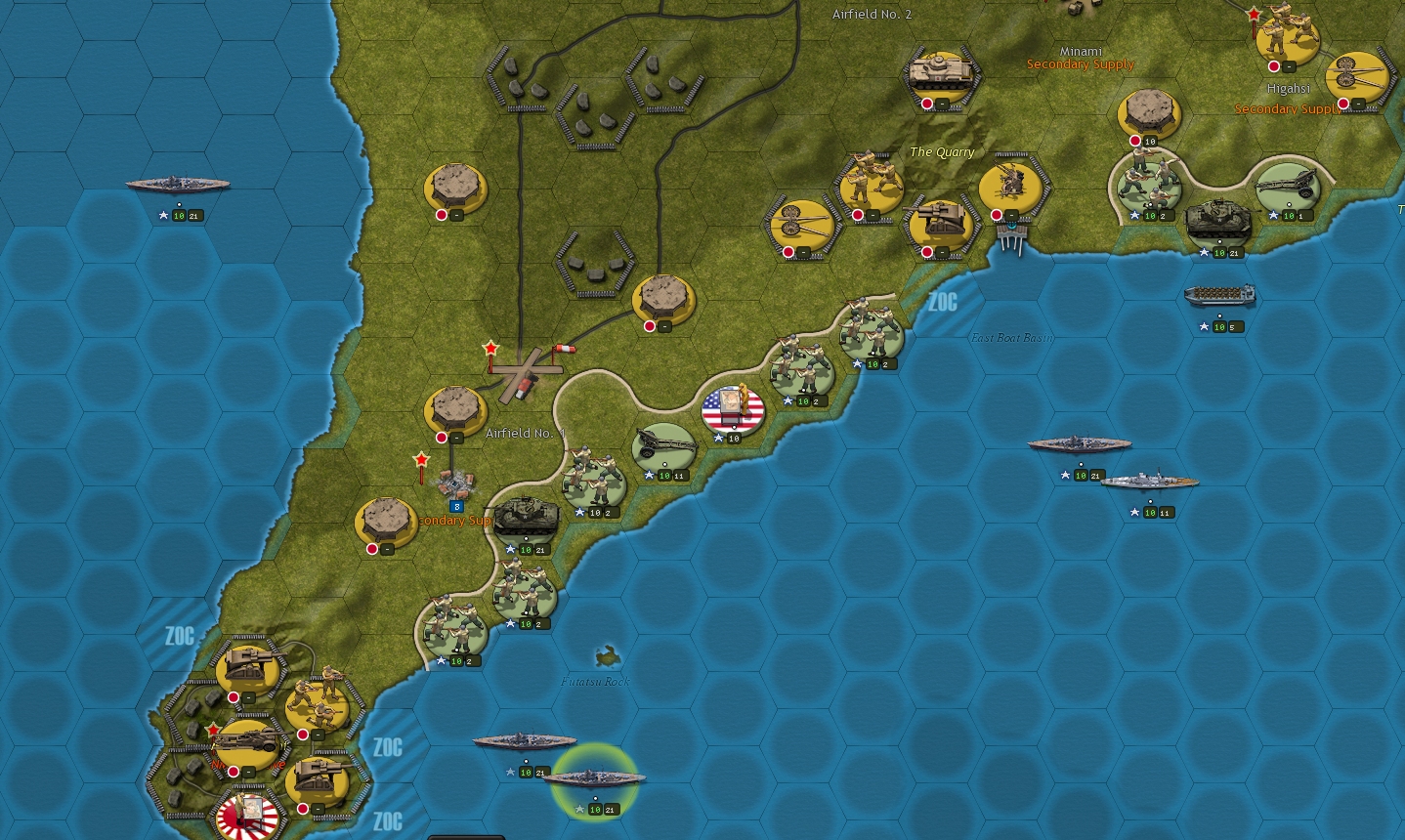
Having slogged through wearisome Iwo Jima scenarios in other wargames, I arrived expecting painful progress… lashing of gruel. Slightly buoyed by unexpectedly generous victory conditions (Scenario designer Robert Carver only asks the US player to take nine VL hexes!) I launched my assault with a history-aping amphibious landing on the SE coast.
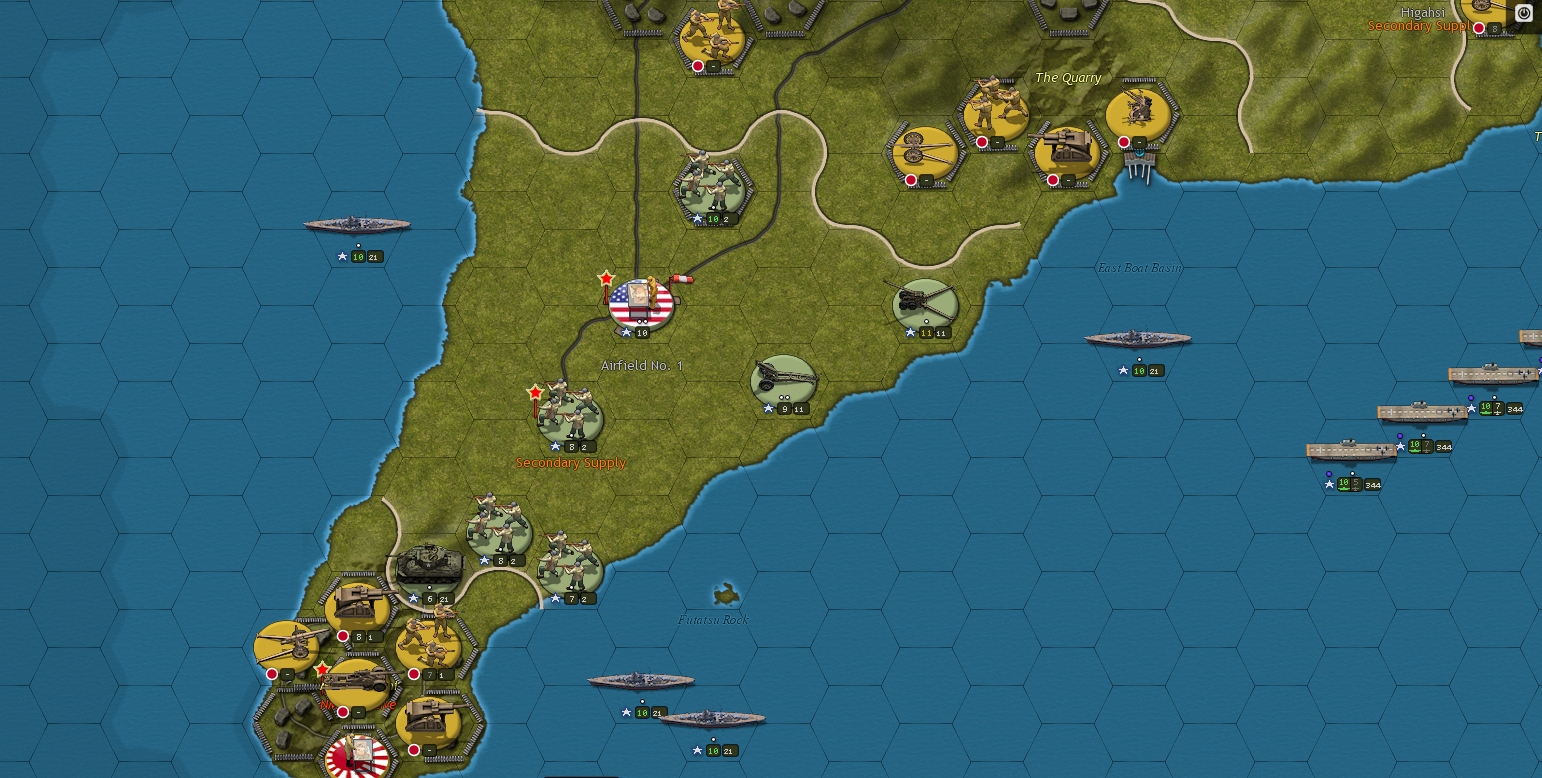
Considering that I hadn’t bothered to open the manual before playing (SCWW2:WitP includes no tutorials), the landing and initial push to Airfield No.1 went surprisingly well. Pounded by multiple Axis artillery units, two regiments of Leathernecks failed to survive the opening turns. However, once my own batteries had landed and had begun automatic counter-battery fire, and I’d discovered which enemies I could safely bypass, and which I needed to eliminate with concerted sequential attacks, the US casualty rate became much less alarming, my rate of progress pleasingly steady.
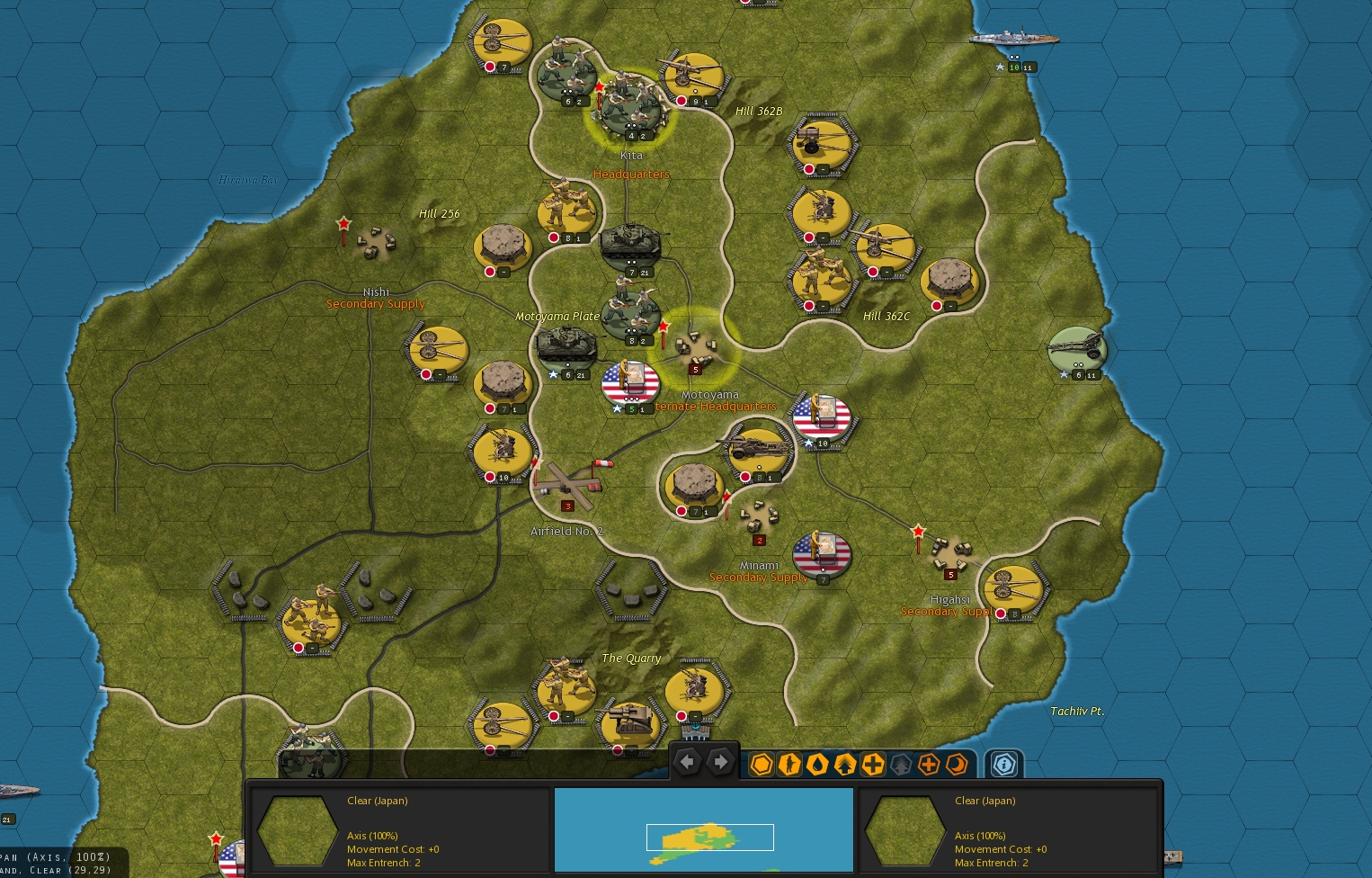
Realising I could land my second wave anywhere on the coast, I chose to bring them ashore in the NE. While this northern force ground westward, conquering the six VLs in their path with little difficulty and few setbacks or scares, the southerners turned their attention to the formidable nine-hex fortress of Mount Suribachi.
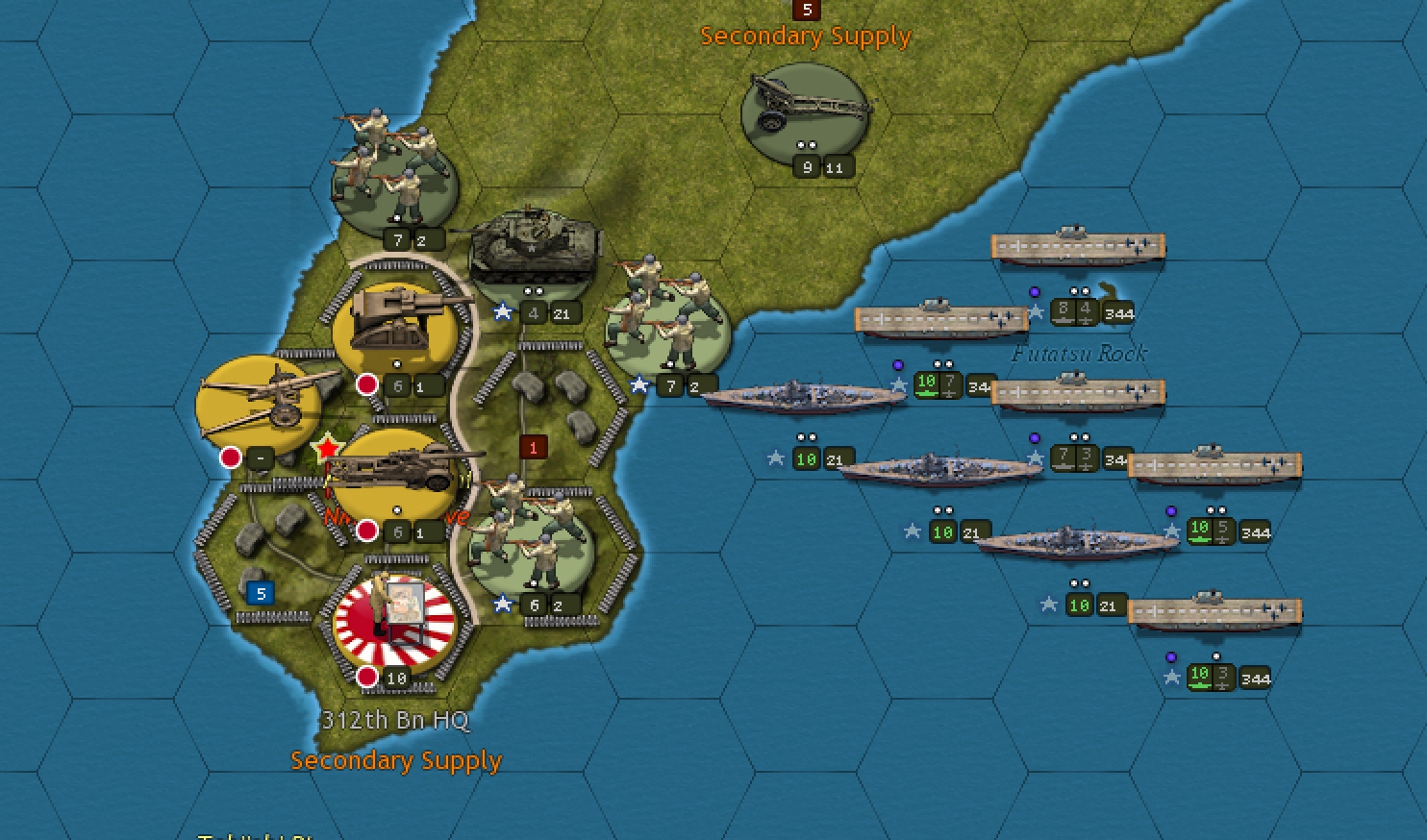
Pummeled by battleships, artillery, and dive-bombers, the tunnel-riddled peak eventually fell with several turns remaining, leaving me feeling the way I often seem to feel at the end of Iwo Jima scenarios – underwhelmed and disappointed. In the couple of hours I’d spent on ‘Sulfur Island’ neither my resolve or ingenuity had been meaningfully tested.
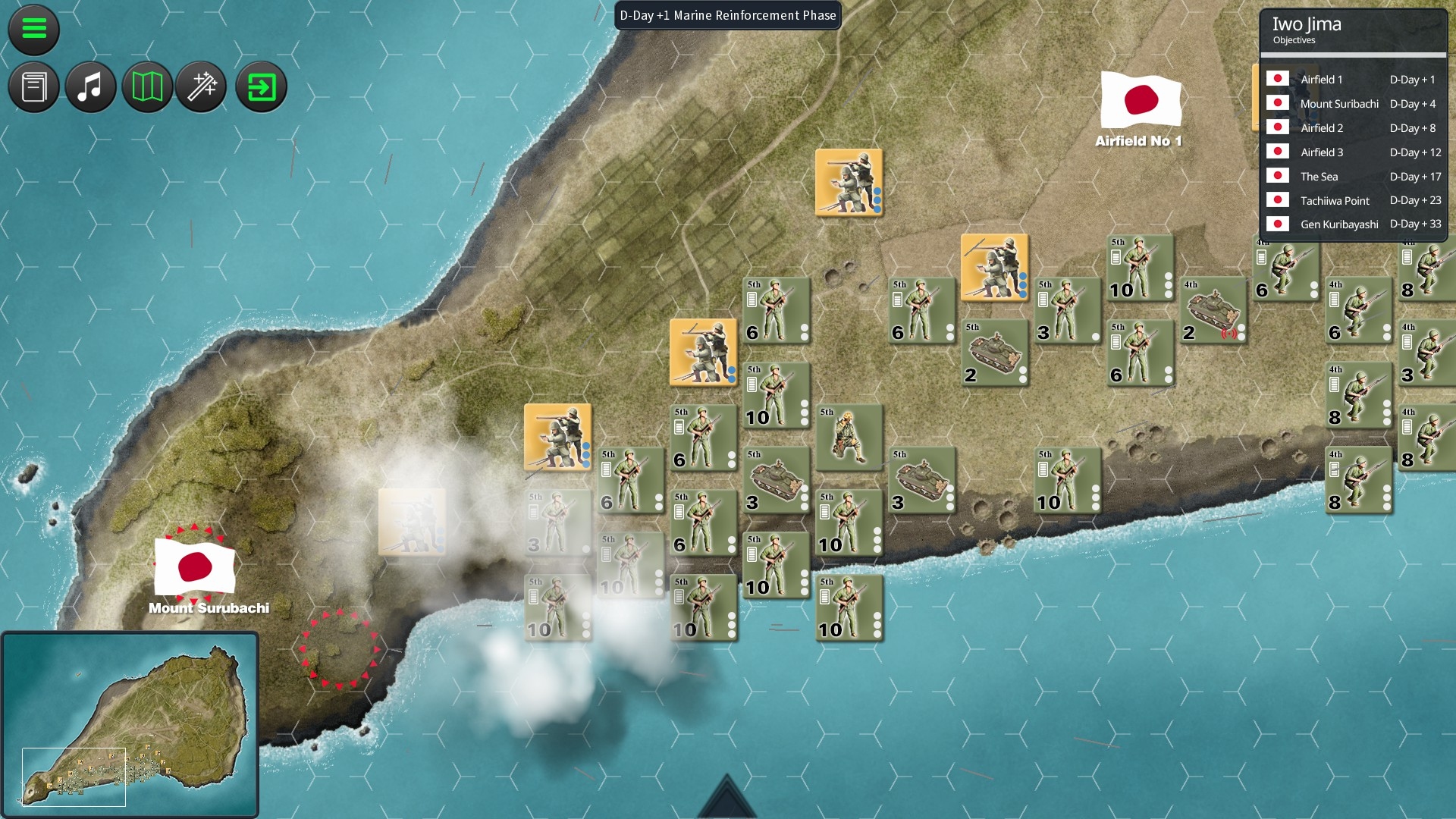
Although Fury’s version of the Battle of Iwo Jima ultimately left me dissatisfied, like many flawed treatments of interesting historical events, it has at least revived my interest in the theme and prompted me to go hunting for better games on the subject. In the next instalment of The Iwo Jima Paradox I’ll tell you what I found when I tried Steam’s only dedicated Operation Detachment title for the first time.

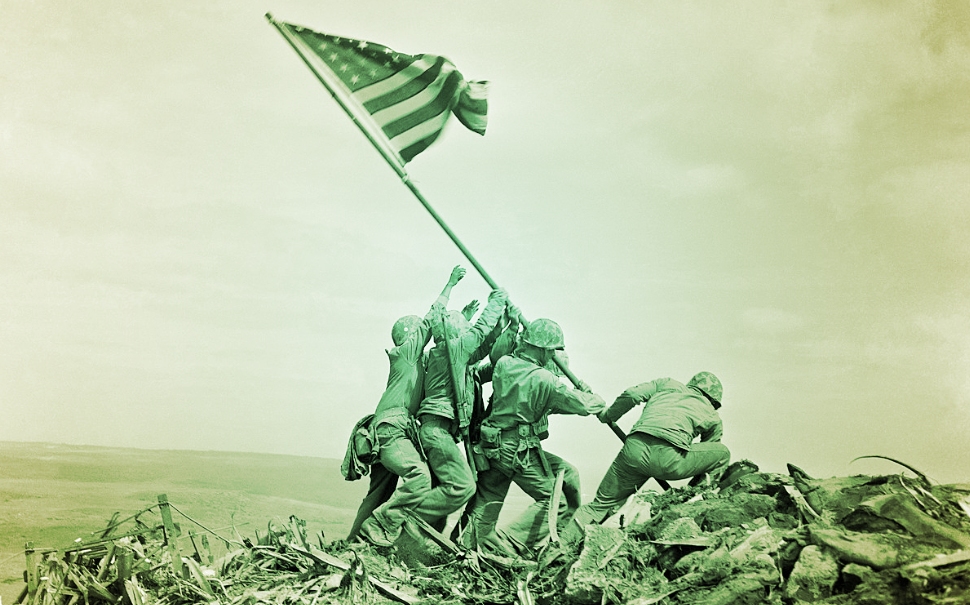
The scale is too large. A good game on Iwo Jima should be on company level with a large, and detailed map. Lots of chrome rules to give a feel for the fight.
Agreed, but I reckon other approaches might pay dividends too. For example, picture an All Quiet in the Trenches-y Iwo Jima game or something focused on the design of the Japanese defences.
Iwo feels like the sort of battle that doesn’t make much sense as a war game below battalion level. The interlocking nature of the defence and the extent of the Japanese indirect fires and entrenchment means that platoon or company level perspectives will either be absolutely random murder simulators, or miss why it was so hard to digest the place without terrible casualties.
I think you could get something pretty interesting in Battlefront CM1 style operation on an Iwo Jima like scale. CM2 might also work but I suspect the game engine is so broken it couldn’t manage the scale, the entrenchment and the indirect fires. The issue for the Americans was maybe how much HE was required to achieve neutralisation and then how much hard work was required to secure what they could occupy.
Graviteam Tank Warfare, Longstop Hill with the artillery rules turned back up to maximum and effective AI entrenchment would also run pretty close to the sort of problems faced on Iwo.
Finally, it might be that Iwo was a foregone conclusion- by the time the Americans got ashore it was only ever going to end one way and it was just about how long and how costly it was going to be. After 1943 it’s hard to think of any battles in the PTO or Burma that weren’t pre-ordained as to outcome. So the challenge is can you execute acceptably or do you experience real frustration. Maybe not the easiest thing to construct in a game.
Yobowargames – the makers of Battle of Iwo Jima – appear to have come up with a fairly clever solution to the ‘foregone conclusion’ problem: VLs with deadlines. You’re fired/replaced if you don’t advance quickly enough. As mechanics go, it’s a surprisingly under-utilised one.
Taking what you’ve written at face value, “VLs with deadlines” was how Unity of Command operated and half the player base vociferously detested it.
So it’ll take some bold justification to explain why you think it’s a good move and why it should be employed in more games.
Sceptically yours,
– – – – – – – – – – – – – – – Colonel K
I reckon it all comes down to context and implementation. Time limits of any kind in wargames can be frustrating if the time limit feels arbitrary, and/or the dev doesn’t allow the player to modulate difficulty. Implemented well, however, and I’d argue they can both bolster historicism, and solve the problem of injecting challenge into ‘foregone conclusions’ such as Iwo Jima. As military history is dotted with examples of commanders relieved of duty because they failed to advance quickly enough, why should wargamers be exempt from performance-related dismissals?